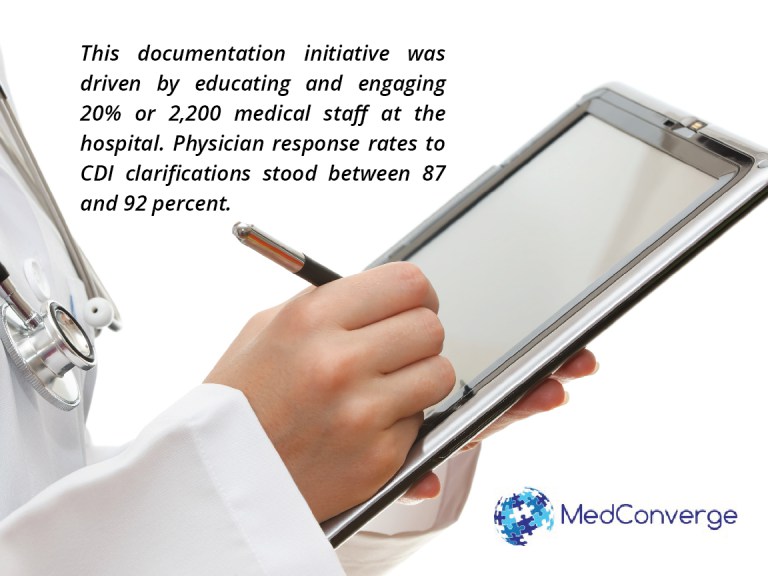All healthcare facilities – irrespective of whether they are a business enterprise or a charitable institution – have to be financially viable in order to continue to provide services. Clinical documentation improvement (CDI) programs have evolved from being an informal part of the process to becoming the backbone of the facilities financial viability. Essential for patient safety and care, quality ratings, accurate reimbursement and reduced physician queries, CDI programs are required and necessary for consistent and complete documentation. With the transition toICD-10, documentation integrity becomes critical as it gives an accurate image of clinical severity along with providing medical justification for MS-DRG and code assignments.
In order to enjoy the full benefits from ICD-10 and meaningful use, data collection techniques have to improve with healthcare providers looking at data collection as a comprehensive initiative to ensure effective and safe patient care. While many large healthcare facilities have invested in automated systems to improve clinical note taking, there are a number of things that the smaller practices can follow to ensure best and accurate clinical documentation.
Create guidelines for best practice
The most important step to clinical documentation improvement is to create guidelines that match the best practices and industry standards. The aim is to provide clarity and brevity while keeping the needs of other readers in mind. According to the American College of Physicians, practices should define guidelines based on “consensus-driven professional standards unique to individual specialties.”
Constant training and education programs
Your staff may be familiar with documentation standards, but in this rapidly changing healthcare environment, it is important that they upgrade themselves regularly. Training should be an ongoing process as there are constant upgrades and improvements to EHR software, changes in regulations and the requirements of payers. Constant and regular training will definitely improve the skill level of your staff in not just documentation but also in identification and rectification of problems.
Appoint a physician advisor/champion
A good way to reduce the practice’s reliance on vendors and third party trainers is to appoint a physician advisor/champion to spearhead the CDI program. The advisor needs to be enthusiastic about the program, complete knowledge of best documentation practices and a good role model. The advisor is the core of the program – someone who is there to answer questions from other physicians and support staff. The effectiveness of the CDI program will depend a lot on the advisor’s drive and commitment to the program.
Monitor performance metrics
Although CDI programs help improve the financial viability of the facility, this alone is not a metric to measure the effectiveness of the program. To really benefit from the program, it is important that the following performance metrics are monitored.
- Number of cases reviewed and time spent per case
- Physician response rates
- Agreement / disagreement rates of physicians
- Response time to queries
- Expected versus observed death rates
- DRG shift rates.
The facility also needs to analyze these results to find out which physicians are queried most often and which diagnosis is queried the maximum – there may be a need for further education/training for physicians / coders.
More access to EHRs for patients
Making mistakes is human and it is inevitable that physicians will make documentation errors at times. Allowing greater access to patients to review their medical records helps in finding these errors. Making use of technology, to allow patients to review their medical records on an online portal can and will help the facility to improve the accuracy of its documentation. As it is, according to the requirements of Stage 2 Meaningful Use, allowing patients access to their medical records is mandatory – why wait to implement the same.








